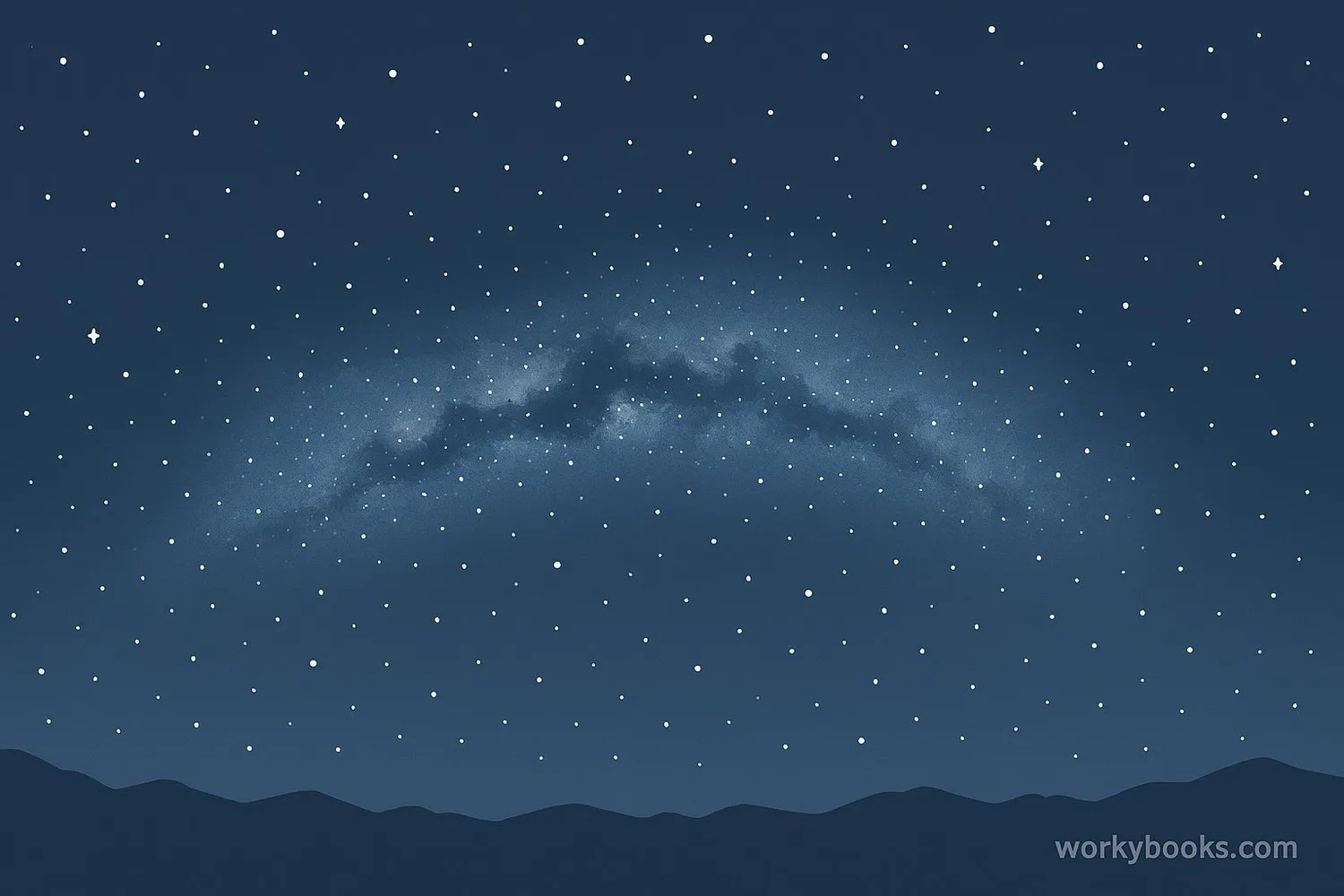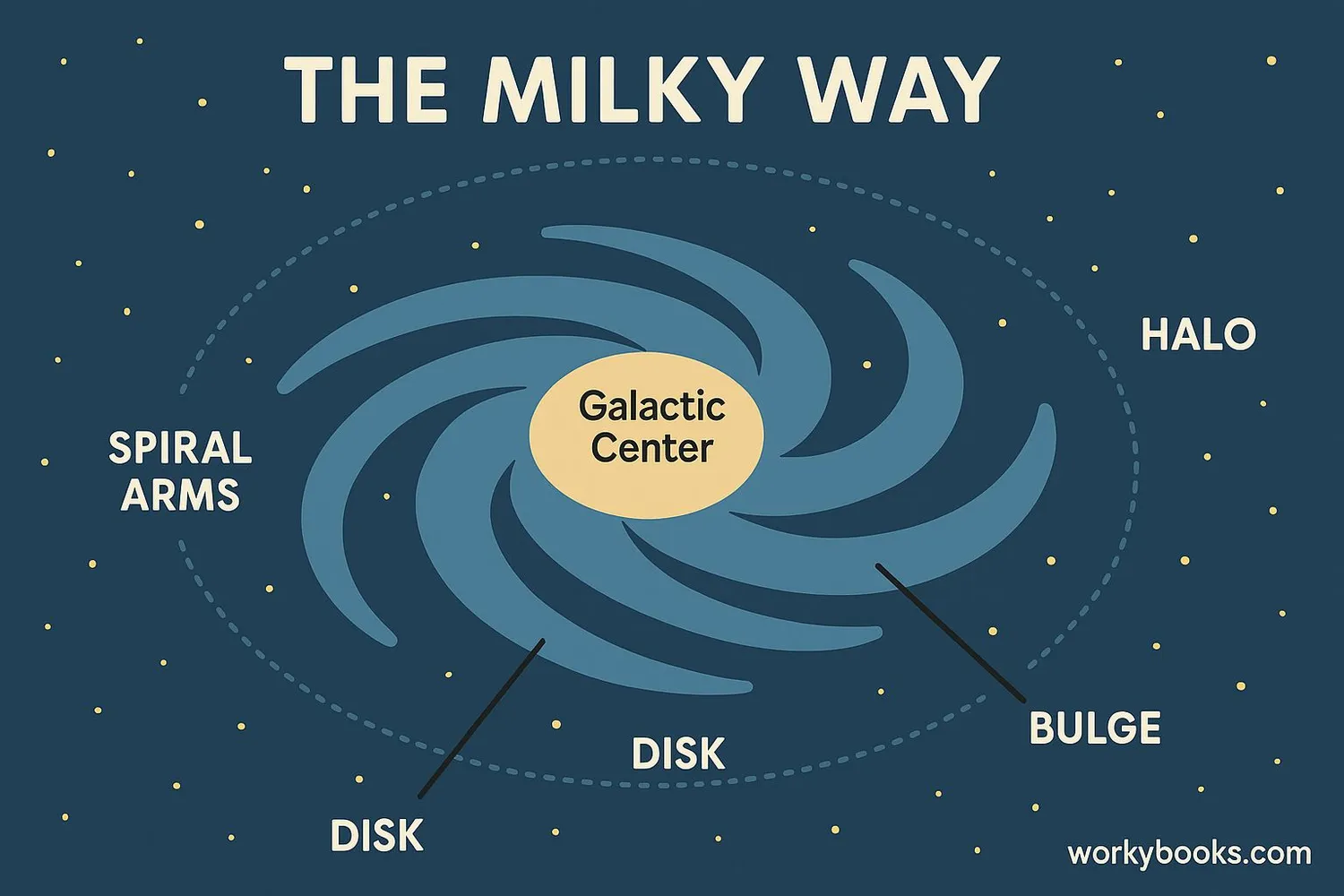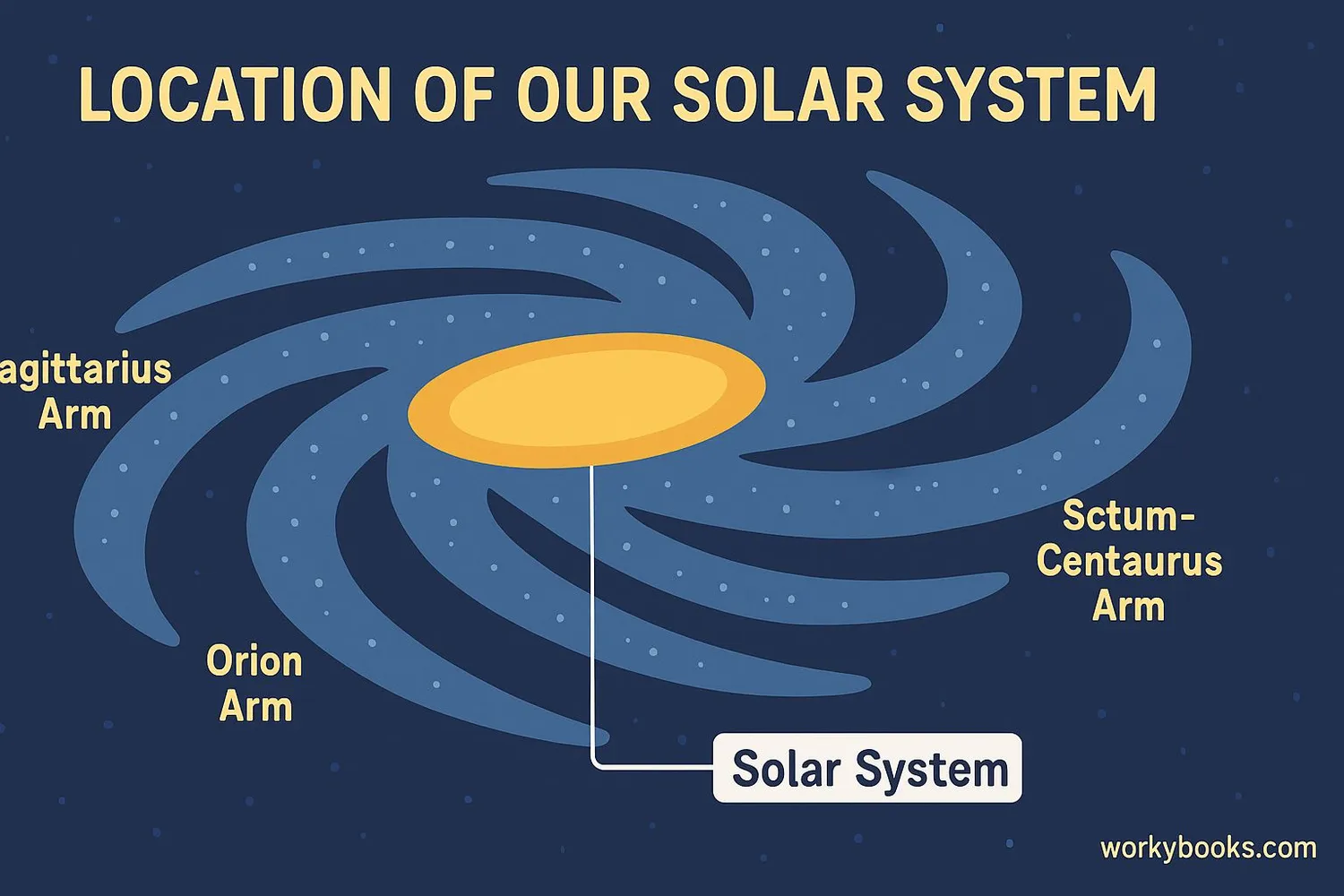Binary Addition - Definition, Examples, Quiz, FAQ, Trivia
Discover our home galaxy and its amazing cosmic structure
What is the Milky Way?

The Milky Way is our home galaxy - a vast collection of stars, planets, gas, dust, and dark matter all held together by gravity. It's called a "spiral galaxy" because of its beautiful pinwheel shape when viewed from above.
The name "Milky Way" comes from its appearance as a milky band of light across the night sky. This glow comes from billions of distant stars that are too faint to see individually. Our solar system is just one small part of this enormous cosmic city!
Galaxy Fact!
The Milky Way is about 13.6 billion years old - nearly as old as the universe itself!
Galaxy Structure

The Milky Way has several key parts that make up its structure:
Galactic Center
The dense central region with a supermassive black hole called Sagittarius A*
Spiral Arms
Curving arms extending from the center where most new stars form
Galactic Disk
The flat region containing most of the galaxy's stars, gas, and dust
Bulge
A spherical region of older stars surrounding the galactic center
Halo
A spherical region surrounding the disk containing globular clusters and dark matter
The Milky Way has four major spiral arms: Norma, Scutum-Centaurus, Sagittarius, and Perseus. Our solar system is located in a smaller spur called the Orion Arm. The galaxy is rotating, with stars closer to the center orbiting faster than those farther out.
Cosmic Size!
The Milky Way is about 100,000 light-years across. That means light takes 100,000 years to travel from one side to the other!
Our Place in the Galaxy

Our solar system is located in the Orion Arm, about 26,000 light-years from the galactic center. This places us in the galaxy's suburbs rather than downtown! From our position:
Our View
We see the Milky Way as a band because we're inside its disk
Orbiting the Center
Our solar system takes about 225-250 million years to complete one orbit
Galactic Neighborhood
The nearest star to our Sun is Proxima Centauri, 4.24 light-years away
The Milky Way is part of the Local Group of galaxies, which includes about 54 galaxies. The largest members are our Milky Way, Andromeda Galaxy, and Triangulum Galaxy. In about 4.5 billion years, the Milky Way and Andromeda will collide and merge to form a new galaxy!
Space Quiz
Test your knowledge about our Milky Way galaxy with this quiz! Answer all 5 questions to see how much you've learned.
Frequently Asked Questions
Here are answers to common questions about the Milky Way:
Space Trivia
Discover amazing facts about our galaxy:
Speeding Through Space
Our solar system is racing around the galactic center at about 515,000 mph (828,000 km/h)! Even at this incredible speed, it takes about 225-250 million years to complete one orbit.
Supermassive Black Hole
At the center of our galaxy lies Sagittarius A*, a supermassive black hole with 4 million times the mass of our Sun! Despite its size, it's currently not very active.
Dark Matter Mystery
About 90% of the Milky Way's mass is invisible dark matter! We know it's there because of its gravitational effects, but we haven't directly detected it yet.
Ancient Galaxy
The Milky Way is about 13.6 billion years old - nearly as old as the universe itself (13.8 billion years)! The oldest stars in our galaxy formed just a few hundred million years after the Big Bang.


